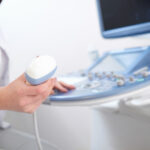Are you experiencing burns, reflux, and acidic burns on the inside of your stomach? Getting a thorough X-ray of your intestine is the solution for this! There are two endoscopic procedures that can be performed – a gastroscopy and colonoscopy. You can get a private colonoscopy (coloscopie au privé) and gastroscopy at clinic nearby. Let us see the differences and get a detailed insight into these two endoscopies.
The Ultimate Distinctive Guide to Getting a Colonoscopy and Gastroscopy
Know about both procedures to understand which one would be the best for you. For expert advice, get a doctor’s consultation so that he can suggest the best treatment for your case. Below is a guide and the key differences between the two endoscopies.
Overview
Gastroscopy
This procedure targets the upper gastrointestinal tract, which encompasses the oesophagus, stomach, and the initial segment of the small intestine. It is also often referred to as an (oesophago-gastro-duodenscopy). Private gastroscopy prices (gastroscopie privé tarif) can be a little on the hefty side; you can try to get the endoscopy done at a public clinic if you are on a tight budget.
Colonoscopy
A colonoscopy, on the other hand, is an exam that identifies changes such as swollen parts or polyps or the presence of cancerous tumours. Apart from this, the process looks for tissue samples (biopsies) can be taken during a colonoscopy as well.
The Reason You Do It
Gastroscopy
This process helps you to determine what is causing digestive signs and symptoms such as heartburn, nausea, vomiting, abdominal pain, difficulty in swallowing, and gastrointestinal bleeding.
A gastroscopy is used for getting a biopsy done and treating diseases and conditions that cause anaemia. Cancerous tumours in the upper digestive system can also be deciphered.
To perform this, special tools can be passed to treat problems in the digestive system. An endoscopy can be instrumental to stop bleeding. An endoscopic ultrasound may also help create images of hard-to-reach organs, such as your pancreas. New methods of endoscopes are done by performing a high-definition video that provides the doctor with clearer images.
Colonoscopy
A colonoscopy is usually done at a private colonoscopy (coloscopie au privé) clinic. The doctor will explore possible causes of rectal bleeding and abdomen pain.
A colonoscopy is mainly used to screen for colon cancer. It is recommended for people who are in their threshold of 40 and can be done every 10 years. If you have any other risk factors, consult the doctor as soon as possible.
This treatment is useful for screening more polyps. If you have had a history of polyps, then you need to take a follow-up colonoscopy and look for any other polyps. By getting a screening, you can reduce the risk of colon cancer. A colonoscopy is also useful in removing objects found in your colon. These include Hyperplastic polyps, Inflammatory polyps, and Adenomatous polyps. One can also trace the symptoms of Crohn’s disease.
How to Prepare for:
Gastroscopy
During the process
On the day of the gastroscopy, you need to stop eating food at least 6 hours before the test. Small sips of water are allowed. Any other change in the food habit for that day would be determined by the doctor. You would be sedated once you are done with the process, and the effect of the anaesthesia would cut down. Visit a clinic to know about the private gastroscopy price (gastroscopie privé tarif).
You might need to take the day off. Also, arrange for someone who can take care of you post the operation. The full recovery from this endoscopy is expected by the next day.
After the process
You would be monitored and given your test results. A follow-up appointment would be made to discuss the test results more fully. The results of any biopsies or samples taken will need several days to come out.
Duration- 15-45 minutes.
Colonoscopy
During the process:
You begin by visiting a private colonoscopy (coloscopie au privé) clinic. You would be sedated and would be given anaesthesia. Once you lie down, the doctor inserts the colonoscope through your rectum. The tube is long enough to reach the entire length of your colon.
This tube allows the doctor to pump air, carbon dioxide, or water inside of your colon. With this, you may feel cramps in your stomach and might feel the urge to have a bowel movement.
The doctor can also insert instruments through the channel to take tissue samples biopsies or removal of cancerous tissues.
After the process
Once you get the exam done, you begin to recover from the sedative. You need to rest. Do not go to work for the rest of the day. You can feel bloated, and pass gas as you clear the air from the colon area. Walking may give you comfort.
There can be a small amount of blood; no need to panic because of that. Usually, this isn’t the cause of alarm, but consult health professionals if bleeding and discomfort persists.
Duration: 30-60 minutes
Conclusion
If you are experiencing acid refluxions and the burns inside are unbearable, the time has come for you to visit a doctor right away. These conditions compel you to go for a complete check-up of the intestine. Both colonoscopy and a gastroscopy have different purposes; you just have to see a doctor to determine which one is required. It might be a possibility that the private gastroscopy price (gastroscopie privé tarif) is a little on the higher side, so if you are out of budget, consider visiting a public clinic for an affordable alternative.










